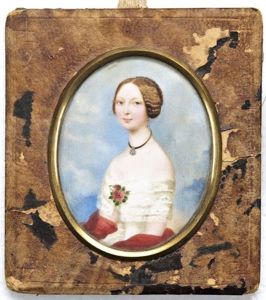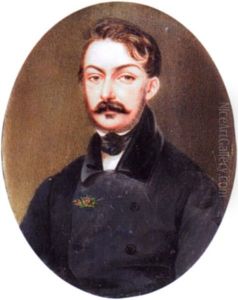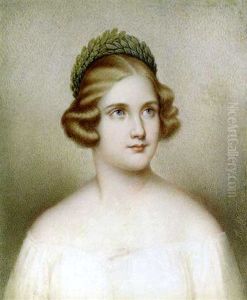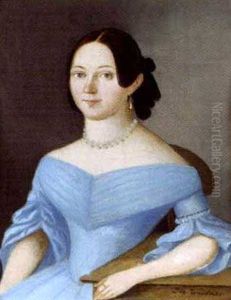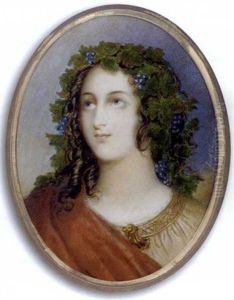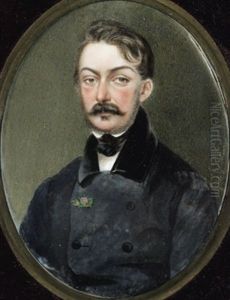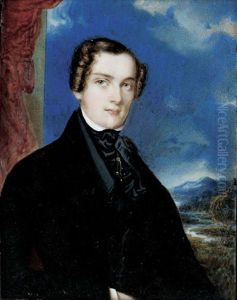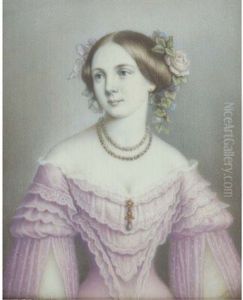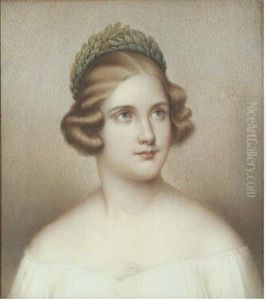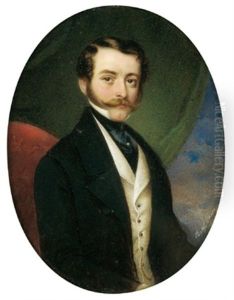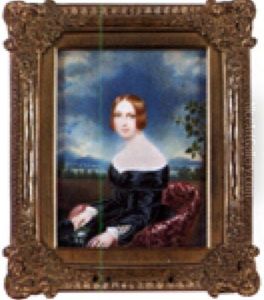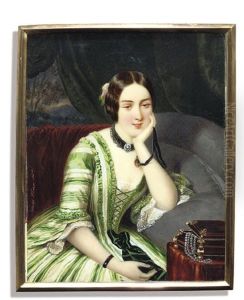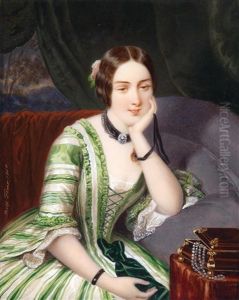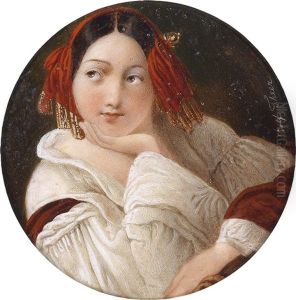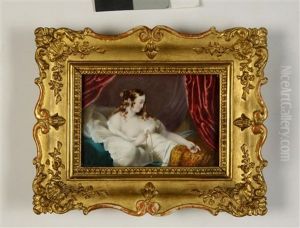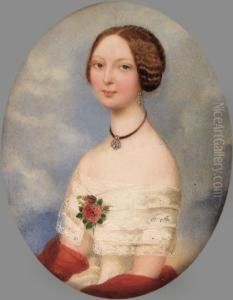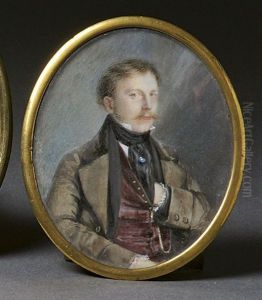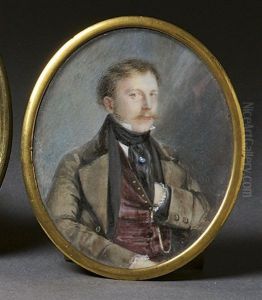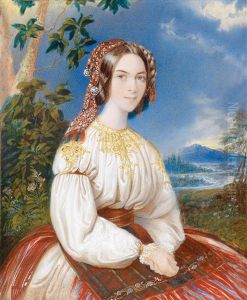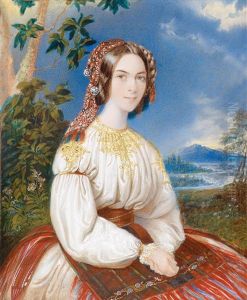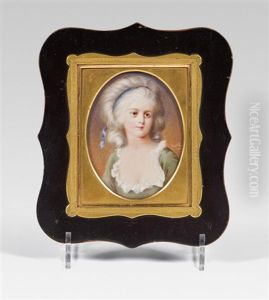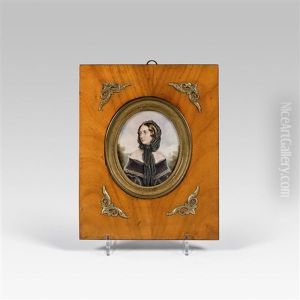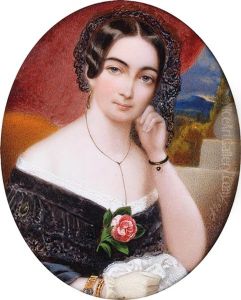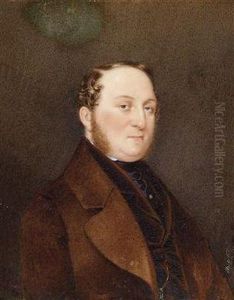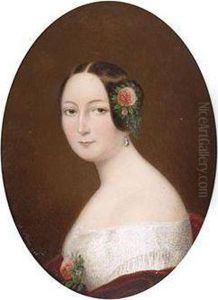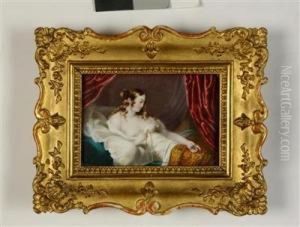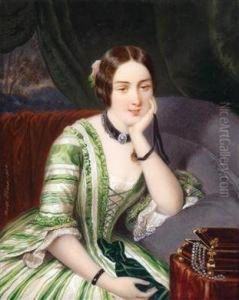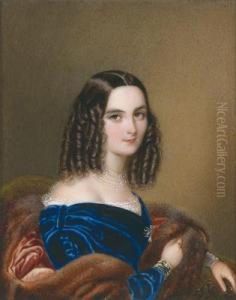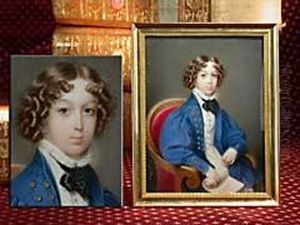Adolf Theer Paintings
Adolf Theer was an Austrian portrait miniature painter, born in 1811 in Brno, then part of the Austrian Empire and now in the Czech Republic. His contributions to the world of art are particularly noted for his mastery in the delicate and demanding medium of miniature painting, a popular art form during the 18th and 19th centuries, especially favored for personal mementos and portraits of loved ones.
Theer was trained in Vienna, a cultural and artistic hub in Europe that allowed him to immerse himself in a vibrant artistic community. His education and early career coincided with a period in European art that valued detail, precision, and a keen observation of the subject, qualities that Theer excelled in and which are evident in his miniature portraits. Unlike his contemporaries who were exploring the burgeoning movements of Realism and Impressionism, Theer remained steadfast in his dedication to the traditional and meticulous craft of miniature painting.
Throughout his career, Adolf Theer was recognized for his ability to capture not just the physical likeness of his subjects but also a sense of their inner life and character. This was a period when portrait miniatures were highly sought after by the aristocracy and bourgeoisie alike, serving both as personal keepsakes and as symbols of status and affection. Theer's clientele included many notable figures of his time, reflecting his reputation as a skilled artist.
Theer worked alongside his brother, Robert Theer (1812-1863), who was also a notable miniature painter. Together, they contributed significantly to the art scene in Vienna and were part of the larger European tradition of portrait miniature painting. Despite the advent of photography in the mid-19th century, which led to a decline in demand for portrait miniatures, Theer's work continued to be valued for its artistic merit and craftsmanship.
Adolf Theer's legacy is preserved through his miniatures that continue to be admired for their detail, delicacy, and expressive qualities. His work provides a window into the cultural and social milieu of 19th-century Austria, capturing the faces and fashions of a bygone era with timeless elegance and precision. Theer died in 1868, but his contribution to the art of miniature painting remains significant, highlighting a blend of technical skill and emotional depth that characterizes the best of this genre.
